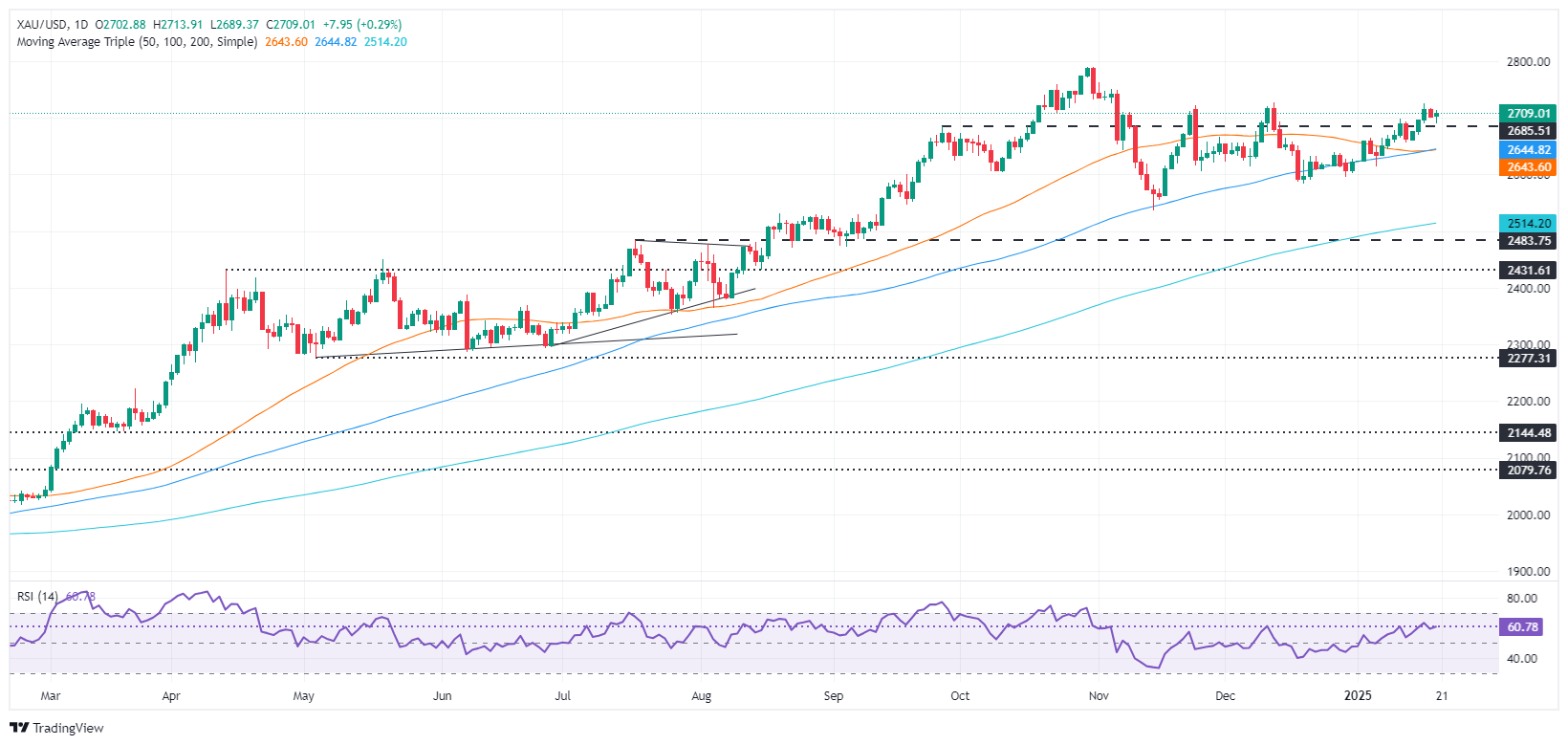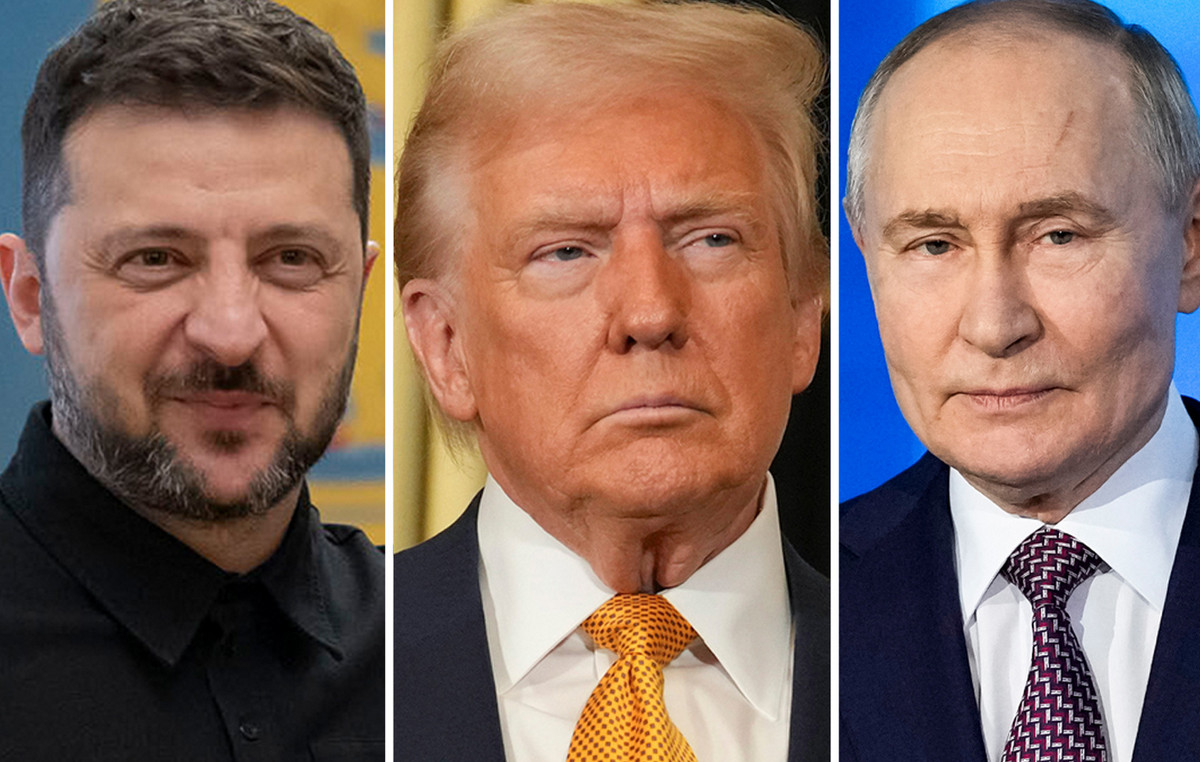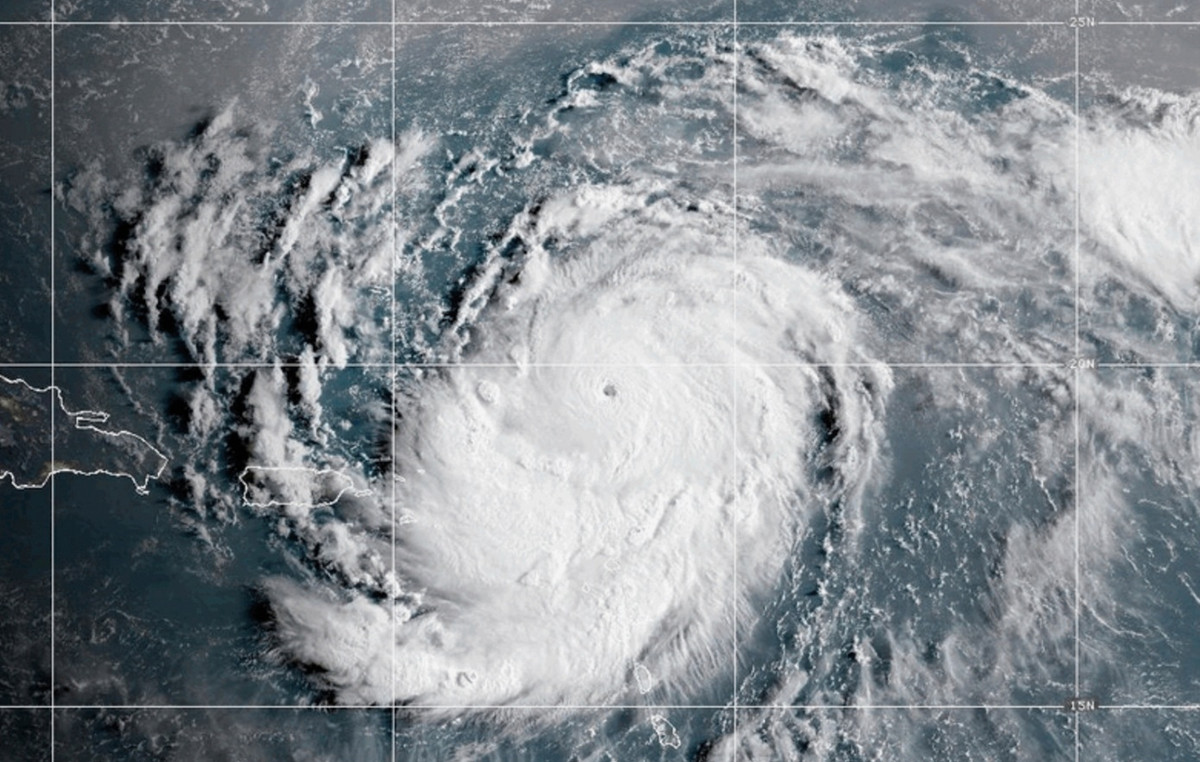- Gold rises as the US dollar falls to a nine-day low during Trump’s inauguration speech.
- Trump declares a national emergency on energy and immigration, aiming to reshape US policies.
- Upcoming US jobless claims and preliminary PMIs are expected to provide direction to the US economy.
Gold prices rose moderately on Monday amid low liquidity conditions after Donald Trump was sworn in as the 47th president of the United States (US). The dollar weakened during his speech as he set aside his aggressive tariff policies, which could fuel inflation and prevent the Federal Reserve (Fed) from easing monetary policy. At the time of writing, XAU/USD is trading at $2,709, up 0.27%.
US President Donald Trump declared a national energy and southern border emergency to reform energy and immigration policies. The first is aimed at filling strategic reserves and exporting American oil, while the immigration policy proposes returning millions of “criminal aliens to the places where they came from.”
Meanwhile, his speech softened his rhetoric on trade, but an article in The Wall Street Journal mentioned the issuance of a sweeping memo directing federal agencies to study trade policies and evaluate U.S. trade relations with China. Canada and Mexico.
The US dollar weakened to a nine-day low during the inauguration speech, according to the US Dollar Index (DXY), which measures the performance of the dollar against a basket of peers. The DXY fell to 107.95 before matching those earlier losses and recovering above the 108.00 figure.
This week, the US economic docket will include initial jobless claims data, preliminary S&P Global PMIs and housing data.
Daily Market Summary: Gold Price Rises Amid US Dollar Weakness
- Gold fell as real yields fell one basis point on Friday. As measured by the yield on 10-year Treasury Inflation Protected Securities (TIPS), it was virtually unchanged at 2.20%.
- The 10-year US Treasury bond yield was unchanged at 4.611%, halting Gold’s advance.
- Geopolitical risks had reduced amid a ceasefire in the Middle East, with Hamas releasing three female hostages in exchange for 90 Palestinians detained in Israeli prisons, Reuters reported.
- Market participants are pricing in roughly equal odds that the Fed will cut rates twice by the end of 2025, with the first reduction occurring in June.
XAU/USD Technical Outlook: Gold Price Consolidates Above $2,700
The price of Gold continues to trade sideways, but above the $2,700 level without being able to surpass the December 12 daily high of $2,725, which would clear the way for buyers to test the psychological figure of $2,750. If those levels are broken, Gold could aim towards the all-time high of $2,790 before $2,800.
Conversely, if sellers push $2,642 – $2,644.
Gold FAQs
Gold has played a fundamental role in human history, as it has been widely used as a store of value and medium of exchange. Today, aside from its brilliance and use for jewelry, the precious metal is considered a safe-haven asset, meaning it is considered a good investment in turbulent times. Gold is also considered a hedge against inflation and currency depreciation, since it does not depend on any specific issuer or government.
Central banks are the largest holders of Gold. In their aim to support their currencies in turbulent times, central banks tend to diversify their reserves and purchase Gold to improve the perception of strength of the economy and currency. High Gold reserves can be a source of confidence for the solvency of a country. Central banks added 1,136 tons of gold worth about $70 billion to their reserves in 2022, according to data from the World Gold Council. This is the largest annual purchase since records exist. Central banks in emerging economies such as China, India and Türkiye are rapidly increasing their gold reserves.
Gold has an inverse correlation with the US Dollar and US Treasuries, which are the main reserve and safe haven assets. When the Dollar depreciates, the price of Gold tends to rise, allowing investors and central banks to diversify their assets in turbulent times. Gold is also inversely correlated with risk assets. A rally in the stock market tends to weaken the price of Gold, while sell-offs in riskier markets tend to favor the precious metal.
The price of Gold can move due to a wide range of factors. Geopolitical instability or fear of a deep recession can cause the price of Gold to rise rapidly due to its status as a safe haven asset. As a non-yielding asset, the price of Gold tends to rise when interest rates fall, while rising money prices tend to weigh down the yellow metal. Still, most of the moves depend on how the US Dollar (USD) performs, as the asset is traded in dollars (XAU/USD). A strong Dollar tends to keep the price of Gold in check, while a weaker Dollar is likely to push up Gold prices.
Source: Fx Street
I am Joshua Winder, a senior-level journalist and editor at World Stock Market. I specialize in covering news related to the stock market and economic trends. With more than 8 years of experience in this field, I have become an expert in financial reporting.








